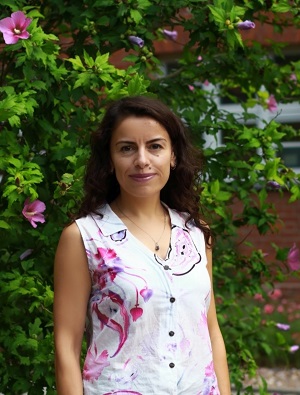Neuroplasticity and Metabolism Research Group

In the Neuroplasticity and Metabolism Research Group, we strive to define the precise mechanism that regulates peripheral metabolism by the brain. We focus on regulation of eating – especially the feeling of hunger and satiety. We are interested in how neurons modify their activity in response to both internal and external signals, informing the brain of such physiological states. In this context, we study genes involved in the regulation of neuroplasticity, such as Dicer and c-fos. Understanding these phenomena will help in the fight against eating disorders such as anorexia and the pandemic of the modern world – obesity.

Witold Konopka received his Ph.D. in neurobiology at the Nencki Institute of Experimental Biology PAS in Warsaw. During his doctoral studies, he developed a procedure for generating transgenic animals (both mice and rats) at the Nencki Institute. Then he spent several years on a postdoctoral fellowship at the German Cancer Research Center (DKFZ) in Heidelberg, where he initiated the topic of research on the brain – controlled metabolism, dependent on microRNAs in neurons. For last years, he has been the head of the Laboratory of Animal Models at the Nencki Institute, continuing research on animal models in the context of cognitive functions and metabolism. At the Nencki Institute, he was the deputy director for scientific affairs. From March 2021, Witold Konopka leads the Neuroplasticity and Metabolism Research Group at Łukasiewicz – PORT.
e-mail address: witold.konopka@port.lukasiewicz.gov.pl

Olga graduated with honors from the University of Warmia and Mazury in Olsztyn, where she studied Biotechnology with a specialization in Molecular Biotechnology. As a part of her master thesis, she conducted research at the Animal Physiology Department, which enabled identification of the Pregnancy-Associated Glycoprotein family in the Pine marten, the Eurasian otter and the Siberian roe deer genomes. After graduation, started cooperation with a pharmaceutical company, where she worked for over three years in Quality Control Department, taking care of the drugs safety. Then she gained her experience at the Nencki Institute of Experimental Biology PAS in Warsaw, where she dealt with animal genotyping, production of AAV viral vectors and cryopreservation of mouse embryos and sperm.
e-mail address: olga.pietrzyk@port.lukasiewicz.gov.pl

Jakub received Ph.D. in neuropsychopharmacology at the Institute of Pharmacology in Cracow, where he did his first post-doc. During his Ph.D., he investigated the neuroprotective effect of an ATM kinase inhibitor in in vitro models. Then he investigated the role of synoviocytes in the development of osteoarthrosis and potential stem cell-based therapies for this disease using animal and cellular models.
e-mail address: jakub.chwastek@port.lukasiewicz.gov.pl

Müzeyyen obtained her PhD in neurobiology from both the University of Strasbourg and the University of Amsterdam as part of a joint doctoral programme. During her PhD, she focused on the identification of the mu-delta co-expressing neuronal population in the lateral hypothalamus (LH) and their role in feeding behaviour and exercise in rodents. She characterised the neurochemical makeup of the neuronal population of interest and the neuroanatomical connections of the specific LH region by performing stereotaxic injections into the mouse brain. She also studied the influence of voluntary wheel running on self-selection of free-choice high-fat high-sucrose diet. And now she is working on the project “Regulation of AgRP hunger-stimulating neurons by microRNAs” at Łukasiewicz – PORT.
e-mail address: muzeyyen.Ugur@port.lukasiewicz.gov.pl

Jola graduated in Biotechnology at Wrocław University of Life Sciences and in Biology at the University of Wrocław. She is currently before defending her Ph.D. thesis at the University of Wrocław. As part of the Erasmus program, she gained laboratory experience at the Université catholique de Louvain in Belgium, and as an intern at the Hirszfeld Institute of Immunology and Experimental Therapy, PAS. In our laboratory, Jola works as a Lab manager, being responsible for budget control, orders, and also for organization and documentation of laboratory work.
e-mail address: jolanta.zelasko@port.lukasiewicz.gov.pl
Current research focuses on determining the activity-dependent expression of genes in neurons, local synaptic plasticity, and the function of microRNAs in neurons and adipose tissue. Ultimately, all the introduced genetic manipulations aim at showing their influence on the behavior and metabolism of the entire organism.
Ongoing projects:
NCN Opus 18, PROTFEED
https://projekty.ncn.gov.pl/index.php?projekt_id=459417
https://projekty.ncn.gov.pl/opisy/459417-pl.pdf
https://www.ncn.gov.pl/sites/default/files/listy-rankingowe/2019-09-16/streszczenia/459417-en.pdf
Standardized Approaches to Modeling and Examination of Neuropsychiatric Disorders (SAME-NeuroID) – Twinning, Horizon Europe
https://port.lukasiewicz.gov.pl/en/o-nas/projekty/projekt/same-neuroid-2/
microRNAs in synaptic plasticity
The aim of the project is to define a role of microRNAs in synaptic plasticity in neurons involved in the formation of the memory trace. We are looking for microRNAs involved in the regulation of the PI3K-Akt-mTOR pathway e.g. miR-103/107. We have recently shown that loss of all microRNAs enhances memory formation in mice (Konopka et al., 2010). To study the PI3K-Akt-mTOR pathway we are using inducible, conditional Dicer and Pten genes knock-outs. For prolonged cognitive mouse testing we have developed a special protocols fro the IntelliCage system (Kiryk et al., 2020).
Role of microRNAs in AgRP neurons in the development of obesity
Identity of cell subpopulation in the hypothalamus which is crucial for development of the obesity phenotype following microRNA loss in the forebrain of transgenic mutants (Vinnikov et al., 2014).
c-fos in arcuate nucleus during fasting
We demonstrated that c-Fos expression is changed in arcuate nucleus during fasting. Strong c-Fos signal is observed from 3 to 24 hours after food removal. c-Fos expression colocalize with AgRP/NPY neurons in medial part of arcuate. Moreover, we are able to induce c-Fos expression using optogenetics in fed mice. To investigate its role in control of food intake, we are working on silencing c-Fos expression with LV vectors and CRISPAR technology.
microRNAs in white and brown adipose tissue
The role of microRNAs in cells of peripheral tissues involved in metabolism e.g. adipose tissue. We are focusing on investigating microRNAs induced during calorie restriction and their impact on subsequent motivation of animals to food seeking. Additionally, we are studying a function of microRNAs in thermogenesis generated in brown adipose tissue.
Influence of different diets on mouse microbiome
We are testing four diets: standard, Western Diet, High Fat Diet and ketogenic diet in mice and their influence on the composition of the microbiome. We are also monitoring the metabolic parameters and the way brain controls amount of calories animals consume. The ultimate goal in the laboratory is to combine cognitive and metabolic projects and test mice fed different diets in advanced cognitive tests in the IntelliCage.
Discovery of new hormones
To examine the coding potential of long noncoding RNAs (lncRNAs) in 2012, a suite of programs for integrating transcriptomic and proteomic datasets called Pinstripe was developed in the group of Prof. John Mattick (Gascoigne et al., 2012). In order to confirm the presence of the identified potential hormones, in the collaboration with the Biological and Chemical Research Centre, University of Warsaw, we searched the proteomic data obtained from human cerebrospinal fluid against the database of 226 new peptides/hormones. We have identified one potential protein/hormone that is being intensively studied to define its function in the context of hunger / satiety regulation.
Methods and techniques used in the laboratory:
- DNA cloning
- qRT-PCR and expression analysis
- Genotyping
- Immunohistochemistry
- Western Blotting
- ELISA
- Fluorescent microscopy
- Mass spectrometry analysis
- LV and AAV viral vectors production
- Stereotaxic animal surgery
- Metabolic phenotyping of mice
- Behavioural analysis of mice
- CRISPR in vivo system for generation of mutant mice
- Inducible and condtional gene KO in vivo – Cre/loxP system
- Two-Dimensional Difference Gel Electrophoresis (2D-DIGE)
Seleted publications:
- Karpiński AA, Torres Elguera JC, Sanner A, Konopka W, Kaczmarek L, Winter D, Konopka A, Bulska E
Study on Tissue Homogenization Buffer Composition for Brain Mass Spectrometry-Based Proteomics.
Biomedicines. 2022 Oct 2;10(10):2466. - Murgia N, Ma Y, Najam SS, Liu Y, Przybys J, Guo C, Konopka W, Vinnikov IA
In Vivo Reductionist Approach Identifies miR-15a Protecting Mice From Obesity.
Front Endocrinol (Lausanne). 2022 Jul 7;13:867929 - Ma Y, Murgia N, Liu Y, Li Z, Sirakawin C, Konovalov R, Kovzel N, Xu Y, Kang X, Tiwari A, Mwangi PM, Sun D, Erfle H, Konopka W, Lai Q, Najam SS, Vinnikov IA
Neuronal miR-29a protects from obesity in adult mice.
Mol Metab. 2022 Jul;61:10150 - Andraka K, Kondrakiewicz K, Rojek-Sito K, Ziegart-Sadowska K, Meyza K, Nikolaev T, Hamed A, Kursa M, Wójcik M, Danielewski K, Wiatrowska M, Kublik E, Bekisz M, Lebitko T, Duque D, Jaworski T, Madej H, Konopka W, Boguszewski PM, Knapska E
Distinct circuits in rat central amygdala for defensive behaviors evoked by socially signaled imminent versus remote danger.
Curr Biol. 2021 Jun 7;31(11):2347-2358.e6. - Czajkowski R, Zglinicki B, Rejmak E, Konopka W
Strategy-Specific Patterns of Arc Expression in the Retrosplenial Cortex and Hippocampus during T-Maze Learning in Rats.
Brain Sci. 2020 Nov 13;10(11):854. - Xu Y, Hajdukiewicz K, Tiwari A, Przybyś J, Parkitna JR, Novak M, Vinnikov IA, Schütz G, Konopka W
MicroRNAs are indispensable for the proliferation and differentiation of adult neural progenitor cells in mice.
Biochem Biophys Res Commun. 2020 Sep 10;530(1):209-214. - Koza P, Przybyś J, Klejman A, Olech-Kochańczyk G, Konopka W
Generation of transgenic rats using a lentiviral vector approach.
JoVE. 2020 May 17;(159). - Kiryk A, Janusz A, Zglinicki B, Turkes E, Knapska E, Konopka W, Lipp HP, Kaczmarek L
IntelliCage as a tool for measuring mouse behavior – 20 years perspective.
Behav Brain Res. 2020 Jun 18;388:112620. - Aklan I, Sayar Atasoy N, Yavuz Y, Ates T, Coban I, Koksalar F, Filiz G, Topcu IC, Oncul M, Dilsiz P, Cebecioglu U, Alp MI, Yilmaz B, Davis DR, Hajdukiewicz K, Saito K, Konopka W, Cui H, Atasoy D
NTS Catecholamine Neurons Mediate Hypoglycemic Hunger via Medial Hypothalamic Feeding Pathways.
Cell Metab. 2020 Feb 4;31(2):313-326.e5. - Koza P, Beroun A, Konopka A, Górkiewicz T, Bijoch L, Torres JC, Bulska E, Knapska E, Kaczmarek L, Konopka W
Neuronal TDP-43 depletion affects activity-dependent plasticity.
Neurobiol Dis. 2019 Oct;130:104499. - Najam SS, Zglinicki B, Vinnikov IA, Konopka W
MicroRNAs in the hypothalamic control of energy homeostasis.
Cell Tissue Res. 2018 Jun 30. - Vinnikov IA, Domanskyi A, Konopka W
Continuous delivery of oligonucleotides into the brain.
Neuromethods 2017, 128, pp. 89-117, Humana Press, New York, NY - Vinnikov IA, Hajdukiewicz K, Reymann J, Beneke J, Czajkowski R, Roth LC, Novak M, Roller A, Dörner N, Starkuviene V, Theis FJ, Erfle H, Schütz G, Grinevich V, Konopka W
Hypothalamic miR-103 protects from hyperphagic obesity in mice.
J Neurosci. 2014 6;34(32):10659-74. - Konopka W, Schütz G, Kaczmarek L
The microRNA contribution to learning and memory.
Neuroscientist. 2011 Oct;17(5):468-74. - Konopka W, Kiryk A, Novak M, Herwerth M, Rodriguez Parkitna J, Wawrzyniak M, Kowarsch A, Michaluk P, Dzwonek J, Arnsperger T, Wilczynski G, Merkenschlager M, Theis FJ, Köhr G, Kaczmarek L, Schütz G
miRNA loss enhances learning and memory in mice.
J Neurosci, 2010 30:14835-14842.

